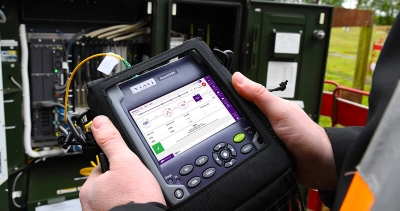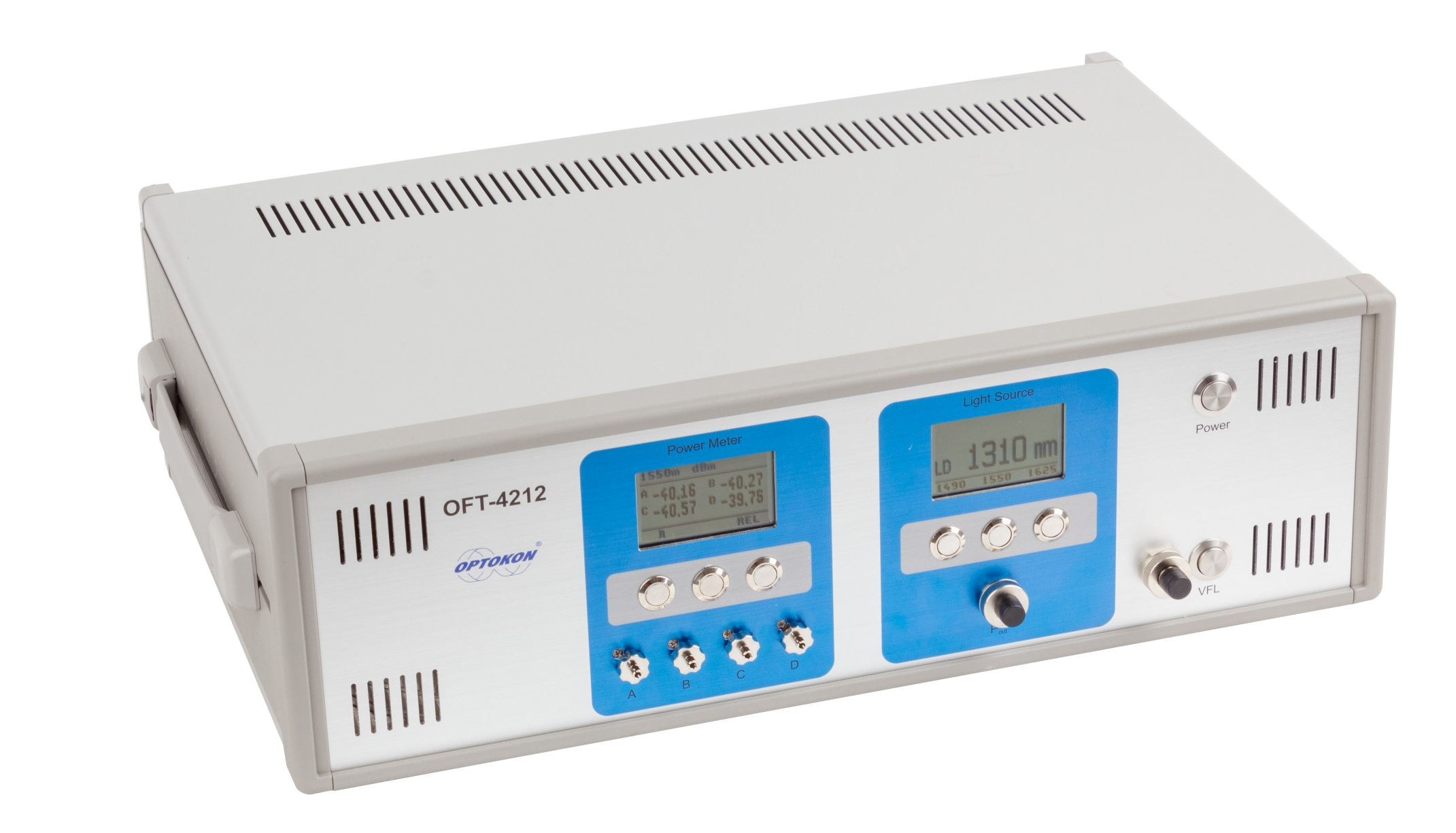Process breakdown for using fibre testing equipment effectively
Recognizing How an Optical Measurement System Improves Precision in Industrial Applications
Optical measurement systems play a necessary duty in improving precision across numerous commercial applications. By leveraging advanced technologies such as laser interferometry and 3D imaging sensors, these systems offer high-resolution, non-contact dimensions. This capacity decreases the threat of damaging delicate elements while making sure accuracy. The effect of these systems extends beyond plain dimensions. Discovering their benefits, applications, and future patterns exposes an intricate landscape of innovation and obstacles that qualities closer exam.
The Essentials of Optical Measurement Systems
Optical measurement systems work as essential devices in different commercial applications, giving specific information collection and evaluation. These systems use light as a key ways of measurement, leveraging optical principles to examine dimensions, positions, and surface area characteristics of items. They integrate elements such as lasers, cams, and sensing units, which collaborate to capture high-resolution pictures and information.
The innovation enables non-contact measurements, reducing the threat of damaging sensitive parts. Optical measurement systems are versatile, locating utility in quality assurance, setting up verification, and dimensional analysis throughout various markets. They are particularly efficient in settings where traditional measurement strategies may fail, such as measuring intricate geometries or observing fast activities.
As sectors remain to progress, the integration of optical measurement systems will remain crucial for making certain precision and efficiency, ultimately improving product quality and functional efficiency in numerous manufacturing procedures.
Trick Technologies Behind Optical Measurement
Key technologies such as laser interferometry methods and 3D imaging sensors play a vital role in the performance of optical measurement systems (fibre testing equipment). These modern technologies allow accurate dimensions and detailed analysis in numerous commercial applications. Recognizing their functionalities is necessary for harnessing the full possibility of optical measurement systems
Laser Interferometry Techniques
Countless laser interferometry strategies have actually changed the area of optical measurement, providing extraordinary accuracy and accuracy in numerous commercial applications. These strategies use the interference of coherent light waves to determine distance, variation, and surface abnormalities with nanometer-level precision. Usual approaches include Michelson interferometry, which divides a beam and analyzes stage shifts, and Fabry-Pérot interferometry, understood for its high resolution in gauging little changes. Additionally, laser Doppler interferometry uses frequency changes to examine rate, making it very useful in vibrant measurements. The flexibility of these techniques enables for their integration into diverse production procedures, improving quality assurance and making sure adherence to strict tolerances. Because of this, laser interferometry proceeds to play a vital role ahead of time commercial measurement requirements.
3D Imaging Sensors
Advancements in measurement modern technology have actually caused the growth of 3D imaging sensing units, which play a considerable duty in optical measurement systems. These sensing units capture three-dimensional data with various strategies such as triangulation, time-of-flight, and organized light. By accurately reconstructing the form and measurements of items, 3D imaging sensors boost the accuracy of measurements in industrial applications. They supply real-time feedback, facilitating quality assurance and guaranteeing that parts fulfill rigid specs. Additionally, their ability to operate in challenging settings, such as varying illumination problems, makes them very useful in manufacturing processes. As markets increasingly adopt automation, the integration of 3D imaging sensing units right into optical measurement systems is expected to drive further renovations in performance and accuracy.
Benefits of Optical Measurement in Sector
Although typical measurement methods have actually long been the requirement in commercial setups, optical measurement systems use significant benefits that boost precision and effectiveness. These systems use light to capture data, leading to high-resolution dimensions that are usually unattainable with traditional methods. The non-contact nature of optical dimensions lowers the danger of damaging delicate elements throughout the analysis process. Furthermore, the rate of optical measurements enables fast information purchase, assisting in timely decision-making in hectic industrial atmospheres.
Optical systems are versatile, with the ability of determining various materials and forms without the need for substantial recalibration. This convenience contributes to improved workflow and productivity. Additionally, the automation possibility of optical measurement systems decreases human mistake, making sure constant top quality control. On the whole, the integration of optical measurement innovation stands for a modern shift towards boosted precision and integrity in commercial operations, eventually causing enhanced product top quality and functional efficiency.
Applications of Optical Measurement Systems

Optical measurement systems play a crucial duty in improving production procedure optimization by giving precise data for decision-making. These systems assure quality assurance assurance via real-time monitoring and evaluation of production metrics. As industries increasingly embrace these technologies, their influence on efficiency and item integrity becomes apparent.
Production Refine Optimization
Enhancing production process performance is increasingly reliant on the integration of optical measurement systems. These systems provide real-time information on various specifications, permitting manufacturers to evaluate procedures with a high level of precision. By enabling accurate dimensions of dimensions, surface area characteristics, and material homes, optical measurement systems assist in the identification of inadequacies and traffic jams in manufacturing lines. The prompt comments from these systems empowers designers to make educated decisions, resulting in maximized machining, setting up, and finishing procedures. The ability to monitor problems constantly permits for adaptive modifications, minimizing downtime and waste. As markets go for better performance and reduced operational costs, optical measurement systems become critical tools for improving manufacturing process optimization.

Quality Assurance Guarantee
The combination of optical measurement systems substantially impacts quality assurance assurance in industrial setups. These systems give specific and non-destructive measurements, making it possible for suppliers to discover issues and inconsistencies early in the production procedure. By using innovative imaging techniques, such as laser triangulation and interferometry, optical measurement systems assure that parts satisfy strict specs. This promotes real-time surveillance, lowering redirected here waste and decreasing the threat of faulty items reaching the market. Additionally, the information accumulated can be assessed to fine-tune production processes better, leading to constant improvement. Inevitably, the adoption of optical measurement systems boosts dependability and uniformity in high quality control, promoting better self-confidence amongst stakeholders and customers alike in the final items provided.
Situation Researches: Successful Executions
Countless sectors have actually efficiently incorporated optical measurement systems to improve their operational effectiveness and item quality. For example, in the auto sector, a prominent maker took on a laser triangulation system to check the placement of car parts. This execution substantially lowered setting up errors, causing boosted security and decreased expenses.
In the aerospace industry, a leading airplane manufacturer made use of optical assessment for accuracy dimensions of turbine blades, attaining a reduction in making resistances and better performance requirements.
In a similar way, a consumer electronics business carried out optical measurement innovation throughout the production of smartphone displays, resulting in enhanced quality assurance and a decrease in faulty products.
These instance research studies illustrate exactly how optical measurement systems not only boost precision however also add to general operational efficiency, showing their value across various sectors. By attending to specific requirements, these systems have shown to be vital devices in modern industrial applications.
Challenges and Limitations of Optical Measurement
While optical measurement systems supply significant benefits in different industrial applications, they are not without their challenges and constraints. One significant issue is level of sensitivity to ecological conditions, such as temperature level variations, moisture, and dirt, which can negatively affect measurement accuracy. Furthermore, optical systems commonly require precise placement and calibration, making them vulnerable to human mistake during arrangement and procedure. An additional limitation is the capacity for interference from ambient light, which can misshape dimensions and necessitate complex filtering techniques. Particular products and surfaces may provide difficulties, as reflective or transparent attributes can lead to irregular readings. The price of high-quality optical elements and systems can additionally be a barrier for some sectors, limiting widespread fostering. Lastly, specialized training is commonly required for employees to effectively operate and maintain these systems, including to the general complexity and operational obstacles.
Future Fads in Optical Measurement Technology
As advancements in modern technology remain to form industrial processes, the future of optical measurement systems is positioned for considerable development. Emerging patterns indicate a shift in the direction of boosted assimilation of expert system and device understanding, making it possible for systems to analyze information in real-time, determine patterns, and improve decision-making processes. On top other of that, the development of miniaturized sensors and progressed optics is anticipated to cause even more compact and versatile measurement options, making them accessible for a bigger variety of applications.
In addition, the incorporation of 3D imaging and high-resolution capabilities will allow for unmatched precision in dimensions, which is necessary for industries such as aerospace and vehicle. The push for automation and Industry 4.0 will additionally drive the demand for optical measurement systems that can conveniently interface with various other innovations. As these trends unfold, optical measurement systems will likely come to be integral to achieving greater efficiency and precision across various industrial fields.

Regularly Asked Questions
Just How Do Optical Measurement Systems Contrast to Standard Measurement Approaches?
Optical measurement systems supply greater precision and rate contrasted to traditional techniques - optical measurement system. They decrease human mistake, improve information collection efficiency, and offer real-time outcomes, making them increasingly preferred in various industrial applications for exact measurements
What Industries Advantage one of the most From Optical Measurement Systems?
Optical measurement systems substantially profit industries such as aerospace, automotive, and this post electronics. Their capacity to give high-precision measurements boosts quality assurance, decreases manufacturing errors, and boosts overall efficiency, making them necessary in competitive manufacturing environments.
Can Optical Measurement Systems Be Custom-made for Particular Applications?
Optical measurement systems can without a doubt be tailored for particular applications. By readjusting criteria such as wavelength, resolution, and calibration techniques, sectors can customize these systems to fulfill one-of-a-kind precision and accuracy requirements effectively.
What Is the Upkeep Need for Optical Measurement Systems?
The maintenance demands for optical measurement systems typically include routine calibration, cleansing of optical components, and software program updates. Adhering to these methods warranties precision, reliability, and long life of the measurement tools in various applications.
How Do Environmental Factors Impact Optical Measurement Precision?
Environmental aspects, such as temperature fluctuations, humidity, and dust, greatly influence optical measurement accuracy. These elements can distort light courses and conflict with sensor readings, ultimately endangering the dependability and accuracy of measurements in commercial settings.